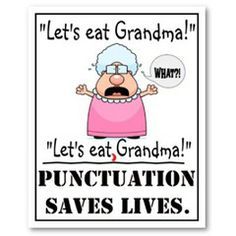Easy English Grammar Tips That’ll Advance Your Writing
The English language is so beautiful, and in my opinion, it is the easiest language to learn. My first language is Arabic, but when I moved to America in 2004, English became the main language I used. In school, with my friends, and sometimes with my parents, that was what I spoke. And when I became a writer, I taught myself all the rules that even the typical American doesn’t know. So I can honestly say that I’ve become an expert in English grammar, and I’m here to share some English grammar tips to help you advance your writing in simple ways.
It’s or Its
A lot of people confuse  “it’s” and “its” together, and I can’t blame them; the two words sound the same, and if you don’t know the rules behind each word, you wouldn’t be able to distinguish them apart. But I’m going to explain them simply so that you never get them mixed up again.
“it’s” and “its” together, and I can’t blame them; the two words sound the same, and if you don’t know the rules behind each word, you wouldn’t be able to distinguish them apart. But I’m going to explain them simply so that you never get them mixed up again.
“It’s” means “it is” while “its” means “belonging to it” (“it” being an animal or inanimate object). So in other words, if you are trying to say “it is cold,” you could shorten the sentence to “it’s cold.” In this case, “it’s” is an abbreviation of “it is.” On the other hand, if you are saying that a table’s edge is sharp, you would say, “its edge is sharp.” Here, “its” is indicating that “the edge, which belongs to the table, is sharp.”
Their or They’re or There
Similarly, “their,” “they’re,” and “there” can be confusing for some people. Here’s how you can tell them apart:
“Their” means “belonging to them.” So if you are saying that something belongs to your friends, you would say the word “their.”
“Their food went missing.” Here, you are saying that the food that belonged to them is missing.
“They’re” means “they are.” Just like “it’s,” “they’re” is an abbreviation.
“They’re cold.” Here, you are saying that they are cold.
“There” means “in that place or position.” It is used to indicate where something is happening.
“There is something over there.” Here, you are saying that something is in a specific location.
Common Comma Mistakes
Commas don’t have to be  confusing. In fact, they are meant to clarify. We use commas to indicate that there are two separate sentences joined together by the words “and” or “but.” We also use commas to make thoughts flow easier and to make sure that meaning isn’t lost. Here are some examples:
confusing. In fact, they are meant to clarify. We use commas to indicate that there are two separate sentences joined together by the words “and” or “but.” We also use commas to make thoughts flow easier and to make sure that meaning isn’t lost. Here are some examples:
“I ate a chicken sandwich at the restaurant, and Bill stayed home.” Here, you have a comma before “and” because you have two different sentences joined together by the word “and.” What you’re really saying is “I ate a chicken sandwich at the restaurant. Bill stayed home.”
On the other hand, you wouldn’t put a comma here: “I ate a chicken sandwich and took a nap.” This is one sentence, and if you split it into two sentence (“I ate a chicken sandwich. Took a nap”), it wouldn’t make sense.
“I like hunting, my family, and my dog.” Here, you are indicating that you like three separate things, so you put commas to separate them. Otherwise, you would be saying “I like hunting my family and my dog,” which makes you sound like a killer.
There are obviously much more comma rules, but if you know these three simple ones, you’ll avoid lots of common mistakes.
The Rules of Quotation Marks
 Quotation marks are the easiest to learn. Use them when indicating dialogue or mentioning specific words (like I’ve done throughout this blog). Next, all you need to know is that commas, periods, question marks, and exclamation points all go inside quotations.
Quotation marks are the easiest to learn. Use them when indicating dialogue or mentioning specific words (like I’ve done throughout this blog). Next, all you need to know is that commas, periods, question marks, and exclamation points all go inside quotations.
“I don’t like you,” she said. “Do you know that?” As you can see, I have all the punctuation marks inside the quote, not outside. It is wrong to say “I don’t like you”, she said.
However, if you are asking a question which happens to include a quote, you would put the question mark outside.
Do you like the quote “I love you to the moon and back”?
Though, you would still write:
I like the quote “I love you to the moon and back.”
There you have it! With those simple English grammar tips, you’ll advance your writing and be able to tell others why certain sentences work in certain ways!
Looking for something new to read? Check out the free preview of my book Dance with the Devil right here:



